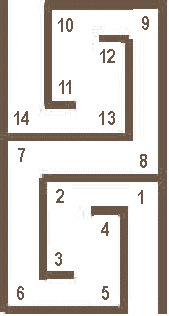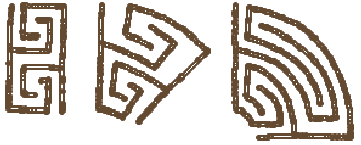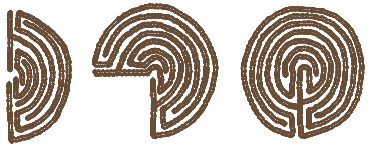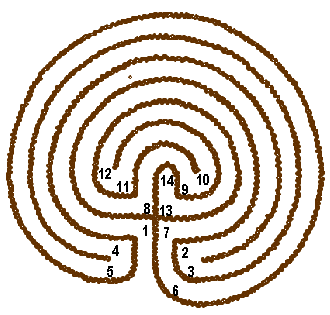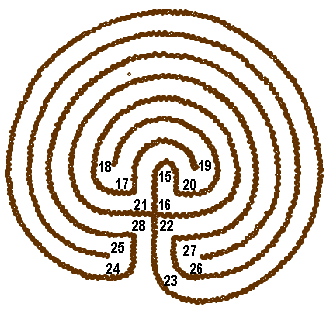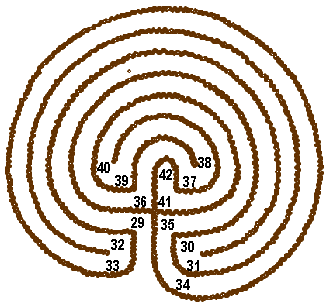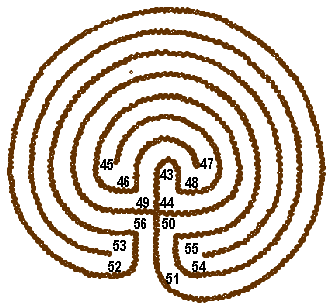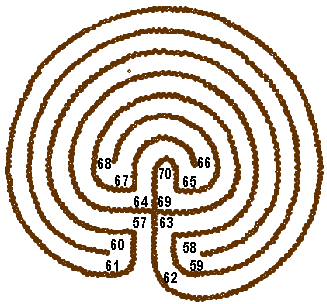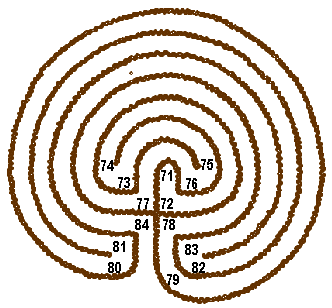
Glyph for Aries
Figure 1
FOUR
SIGNS / FOUR ELEMENTS
FOUR HOUSES / FOUR PHASES
When the twelve signs of the zodiac and their respective houses are divided into an 84-year cycle, each covers a period of 7 years. In dividing the full cycle into three 28-year sub-cycles, the movement of each cycle is through four signs/houses/phases. In turn, each sign is associated with one of the four elements. Aries, standing at the vernal equinox, is a fire sign, and the house of the first seven years of life. The second 28 years begins with the fifth house of Leo, also a fire sign, as is the ninth house of Sagittarius which initiates the third and final 28 years. Each of second phases of life's three 28-year cycles is associated with an earth sign, the third phases with air signs, and the fourth phases with water signs.
What do the elements of fire, earth, air and water--in this order--communicate about how a cycle--all cycles--unfold?
With the lunation cycle as a model, the first phase initiates the cycle; the second builds towards its fullness; the third illuminates its meaning; and the fourth recedes back into the seed potential from which the next cycle will unfold. Such is the pattern of the unfolding/refolding phases of all cycles.
Thrust forward by the element of fire, the first phase initiates the cycle. The substantiating element of earth of the second phase builds towards the cycle's fullness. In the third phase, the element of air--the realm of light and consciousness--offers insight into the significance of the cycle. Finally, the fourth-phase dissolving element of water distills the progression of the cycle into the seed pattern from which the next cycle will unfold.
How does this four-phase sequence of a cycle apply to the first 28 years of life?
The fire of Aries is the life force contained within the seed by which life is initiated. Its glyph is the unfurling spiral of the ram's horn (Figure 1), or in the plant kingdom, the unfurling of the fern. The same spiral imprint is on the house of the snail, and also the formation pattern of galaxies. Aries, as the first house, is the impulse by which life is inspirited and animated. It is the infant's first cry that allows air swirls into and fills its lungs as it emerges from its watery womb.
The emergence of the first birth is into an existence as a separate being, but whose survival depends on being nurtured and cared for by others, and whose personality is formed and influenced by those into whose care it is placed as well as the environment of those first seven years. All of these circumstances are formative to the growing child's sense of self and the persona it is adopting in order to survive both physically and emotionally. But there are other factors--soul factors--that come into play as well so that even the adverse circumstances of a life can play a role in the wholeness and fulfillment of individual life purpose.
The sign of the second phase is Taurus, an earth sign, which corresponds to the second seven-year period of life. It is an accelerated time of building and developing physically. During these middle years the child's boundaries are extended to include a larger family, and a still larger identification with religious, racial, social and cultural traditions, but while still contained within the framework of and dependency upon a primary family. The end of the second phase coincides with the fullness of the cycle at around 14 when physical development is close to complete and the crisis of independence looms ahead.
The third phase is in the house of Gemini, an air sign, and significant as an accelerated time of mental growth and development. This phase corresponds to ages 15 to 21 and marks the transition from adolescence to the onset of adulthood, the natural time of preparation for finding and fulfilling one's cultural niche. As the moon's third phase begins at the time of greatest light, so the third phase of life's first cycle is a time for dreaming largely about what one's life can be, and for following where one's interests, abilities and inclinations are leading.
The final or fourth phase of a cycle is its darkening, when the physical, social and mental development that has taken place is ready to meld with the whole of life so far. Cancer, a water sign, is the final phase of this first cycle. Its waters of dissolution are in preparation for the birth of the second stage of life when what has been realized during the first will be enlarged upon. On an intuitive level, Cancer's waters are experienced as a desire for permanent relationship and a home and family of one's own.
